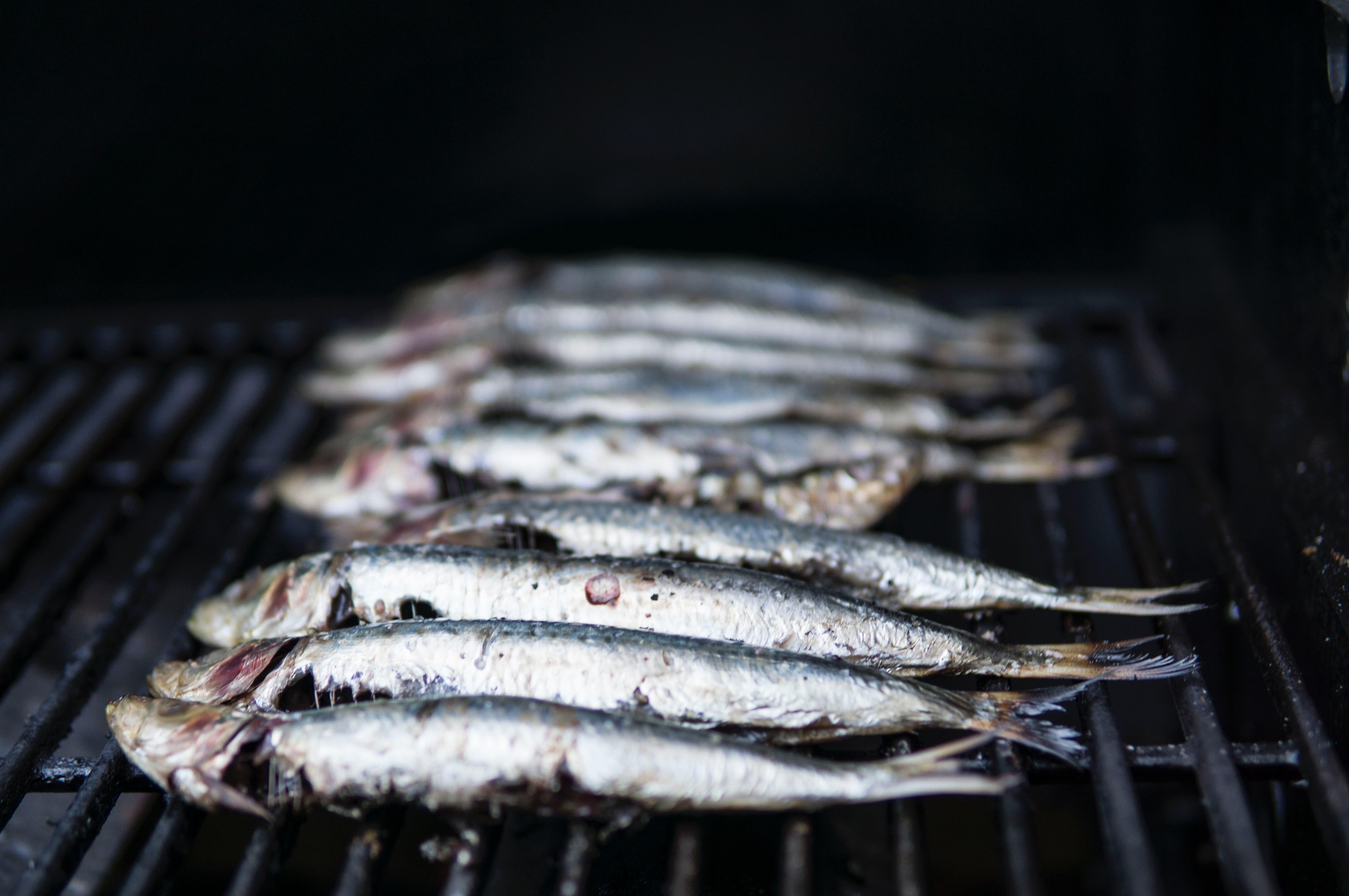Superfoods In Your Kitchen: 15 Healthy Treats For Dogs

As more people have embraced healthier eating, and become more aware of what they’re putting on their plates and in their dogs’ bowls, the term “superfood” has become ubiquitous. It’s been used to describe everything from acai berries to zucchini and it’s helped sell a lot of supplements.
When it comes to foods for your dog, there are some that qualify as super in that they’re safe to eat, and nutrient-dense. If you’re feeding dry food and looking for ways to boost your dog’s intake of nutrients, consider some of the foods below as a meal-topper. If you’re feeding a diet of fresh food, you don’t necessarily need the nutrient boost these foods provide, but they can make great choices for occasional treats.
What makes a food super?
But first, let’s establish: what is a superfood—and is it really super?
The term superfood achieved the distinction of being added to the Merriam Webster dictionary in 2014 and is defined as “a food (such as salmon, broccoli, or blueberries) that is rich in compounds (such as antioxidants, fiber, or fatty acids) considered beneficial to a person’s health.” But the idea of superfoods dates back to the early 20th century, and, like so many things, has its origins in a marketing campaign.
According to the Harvard TH Chan School of Public Health, the United Fruit Company launched a campaign in 1917 touting the amazing health benefits of its most important import, bananas. Later, doctors published papers on the effectiveness of bananas in treating celiac disease and diabetes, and the term took off. Since, it’s been used to describe, and sell, countless foods for people and dogs, though there is no regulatory guidelines concerning its use on food packages.
Beneath the marketing is the fact that so-called superfoods tend to be nutrient-dense, so they provide a big nutritional bang for the buck. Superfoods typically provide high levels of one or more health-supporting nutrients, including phytonutrients and antioxidants like vitamins A and E and beta-carotene, essential fatty acids, vitamins, minerals, or fiber.
Read on for a list of superfoods that are safe and healthy for dogs, find out the foods’ nutritional benefits, and learn tips on how to prepare and feed your dog these super, and super delicious, foods.
Blueberries
Despite their small size, berries pack a powerful nutritional punch. Although many berries are considered superfoods, blueberries could be considered the crown jewel of the berry family. Blueberries contain high levels of antioxidants, powerful compounds that slow damage to cells in your dog’s body. Blueberries also support urinary tract health (as do cranberries). The blue-red color in blueberries comes from flavonoid pigments called anthocyanins which have anti-inflammatory and antioxidant properties—they’ve been shown to help reduce the risk of some cancers, and protect brain cells and memory function. Acai berries, strawberries, and blackberries also contain anthocyanins. Studies involving mice indicate that anthocyanin-rich fruit like blueberries can help counteract weight gain and the development of fat cells.
All berries, including strawberries, are high in fiber and beneficial vitamins and lower in calories and sugar than some other fruits. That said, be sure to feed berries in moderation to prevent stomach troubles or weight gain.
Feed berries whole to larger dogs, and cut or crush them for very small dogs to prevent choking. You can also puree them with a little plain yogurt for a doggie smoothie, or add them to your dog’s regular food. If you’ve got bags of frozen berries for your own smoothies, you can even feed a few straight from the freezer for a cool treat.

Anchovies and sardines
Anchovies and sardines are little fish that offer dogs huge health benefits. These fish provide high levels of healthy Omega-3 fatty acids which include eicosapentaenoic acid (EPA) and docosahexaenoic acid (DHA), which can improve the quality and condition of your dog’s coat and skin, as well as support heart, brain, and joint health.
They’re also a great source of calcium, which also supports your dog’s bone and joint health, and they provide a range of minerals and trace minerals, including natural forms of zinc, as well as vitamins B12, D, E, and K. Anchovies and sardines are also a source of high-quality protein that’s sustainable and low mercury as they’re lower on the food chain than bigger fish (they feed on plankton, not on other fish).
Look for wild-caught canned anchovies and sardines that are packed in water rather than oil, with no added salt. Anchovies and sardines can be served as a snack, offered whole, or cut into pieces, or try topping your dog’s food with a chopped anchovy or sardine.
Feed them in moderation. One anchovy has about eight calories. Smaller dogs can safely consume two to three anchovies per day, while larger dogs can eat up to five.
When feeding canned sardines, you can feed all the parts of the fish, including the bones (which help supply all that calcium) One 3.75-oz can of sardines packed in water is about 100 calories. For smaller dogs, think a quarter or half a tin per week, while larger dogs can have up to one tin. Remember to factor these extra snacks into your dog’s overall calorie intake (and use up your can of sardines within a few days of opening it).
Bone broth
Touted for its many health benefits, bone broth is made from simmering animal bones and connective tissue for a full 24 hours or more. The resulting broth is a nutrient-dense treat that’s high in protein and contains anti-inflammatory amino acids, vitamins, and minerals including calcium, magnesium, and phosphorus. The collagen in cartilage and bone also yields gelatin, a protein that helps support gut health and joint health. Bone broth contains other compounds that can help dogs’ joints, including glucosamine and chondroitin, which have been shown to support joint health and slow or halt the progression of degenerative joint diseases like hip dysplasia and arthritis.
You can make your own bone broth with raw bones, or bones left over from your meals, like roast chicken or turkey, and bone-in meats. You can also buy commercial bone broth at the grocery store. Start with small amounts first (a few tablespoons) to make sure the bone broth doesn’t upset your dog’s stomach. Feed it to your dog in a bowl or pour it over their regular food. (Read more about how to make bone broth here).
Carrots
Carrots contain beta-carotene, a nutrient found in orange-hued fruits and vegetables that can boost immune health, support eye health, and improve your dog’s skin and coat. Carrots also contain a lot of fiber, which is good for the digestive tract. Raw carrots are a healthy, low-calorie snack (and chewing them is great for your dog’s teeth and gums).
Be sure to cut whole carrots into bite-size chunks before feeding them to your dog. If your dog doesn’t care for raw carrots, you can try steaming or boiling them. You can also puree boiled carrots and mix them into your dog’s food for a boost of fiber and nutrients.
Chia seeds
Chia seeds are a nutritional powerhouse, packed with protein, fiber, antioxidants, calcium, iron, magnesium, B vitamins, and Omega-3 fatty acids. Chia seeds boost your dog’s immune system, help improve skin and coat, support the joints and intestinal health, and help support insulin function and regulate blood sugar. They’re great for dogs on weight-loss programs as they absorb water and slow down digestion, helping dogs feel fuller longer.
To feed chia seeds, soak them in water (use a 1 to 10 ratio with water) for between 30 and 90 minutes and mix into your dog’s food. If you feed fresh, moist food, you can also simply sprinkle them dry on top of your dog’s meals. Chia seeds contain ample fiber so be careful to start with a small amount and feed sparingly— about 1/4 teaspoon per 10 pounds of your dog’s body weight.
Dark, leafy greens
While we know that dark leafy vegetables are good for us, science has proven that they’re good for dogs too! A famous (well, famous in dog circles) 2005 study showed that dogs who ate green leafy vegetables reduced their risk of developing cancer by 90% (and the dogs that consumed yellow-orange vegetables—looking at you, carrots— reduced cancer risk by 70%).
Leafy vegetables that are darkly colored like spinach and kale, are rich in phytonutrients, which gives them antioxidant and anti-inflammatory qualities. Dark leafy greens are also high in calcium, iron, potassium, and vitamins A, C, and K, and contain a lot of fiber.
Make sure to rinse leaves well to help remove any pesticides. You can feed leafy greens like kale and spinach raw—tear up some leaves and add to your dog’s food—or you can steam or sauté in a little olive oil, then mix them into their food. If you feed your dog fresh food, there’s a good chance it may already contain greens like spinach. But if your dog likes leaves, you can serve a little extra, sparingly and occasionally.
Eggs
Eggs are jam-packed with high-quality protein, amino acids, essential fatty acids, vitamins, and nutrients. The health benefits of eggs are numerous, including improved skin and coat. Eggs are highly digestible by dogs, so they are great for pups who are not feeling well or recovering from stomach upset.
Feed eggs on their own scrambled or hard-boiled, or use as a protein-packed topper for your dog’s food. As with introducing any new food, start off slowly, gradually working up to larger amounts (up to 1/2 to one egg for small and medium dogs and one to two eggs for larger dogs). Make sure to factor in the extra calories you’re feeding—one egg is about 75 calories—and don’t exceed your dog’s daily caloric allowance.
Ginger
The ginger used in cooking is the root of the ginger plant and a relative of turmeric (another superfood ingredient). Ginger has anti-inflammatory properties that may be beneficial for many things, including fighting cancer and relieving arthritis. Ginger also soothes the digestive system, easing nausea, gastrointestinal problems, and bloat, naturally.
Ginger is potent, so you only need a little, peeled and minced (1/4 to 1/2 teaspoon for small and medium dogs, and up to 3/4 teaspoon for large dogs). Start slow with about half the recommended amount at first, mixing the ginger directly into your dog’s food. Ginger may lower blood sugar and blood pressure, so check with your vet about any conditions like diabetes before feeding ginger.
Olive oil
Olive oil contains monounsaturated fatty acids, Omega-3, and Omega-6 fatty acids, and antioxidants that protect against free-radical damage and oxidation Olive oil also acts as an anti-inflammatory, helping reduce the risk for serious diseases like cancer, heart disease, and diabetes. Its oleic acid content works with other beneficial compounds to protect against cancer, and it can also improve coat and skin condition.
Stick to extra virgin olive oil, and add it into your dog’s diet by drizzling it over their food. Be mindful that it contains about 120 calories per tablespoon and 14 grams of fat. Even though that’s healthy fat, servings should be limited to one teaspoon per 20 pounds of body weight per day.
Parsley
More than the king of garnishes, curly leafed parsley is a superfood that contains antioxidants, vitamins A, C and K, and folic acid. Parsley is also a known anti-inflammatory, can support your dog’s immune system, joints, kidneys, and urinary tract, and as an added benefit, it freshens your dog’s breath, too.
Parsley is indeed a superfood, but it’s important to feed only curly leafed parsley—the kind found in most kitchens—and only in small amounts as all parsley contains a compound called furanocoumarin that can be harmful in (very, very) large quantities.
Try adding a few pinches of chopped parsley to your dog’s food a few times a week. You can also blend parsley with water (one teaspoon per 20 pounds of body weight) and create a juice you can pour right into their water bowl or brew parsley root into a tea (1 teaspoon per 10 pounds of body weight).
There’s a completely different kind of parsley, spring parsley, that you should NOT give to dogs due to high levels of furanocoumarin.

Pumpkin
Like carrots and other orange fruits and vegetables, pumpkin is rich in beta-carotene, which not only enhances immune health, but also boosts eye health, and supports your dog’s skin and coat. Pumpkin also contains a large amount of soluble fiber, which, surprisingly, can serve two functions by both relieving diarrhea and helping with constipation. This seasonal treat is also rich in antioxidants; vitamins A, C, and E; calcium; and iron.
Mix one or two tablespoons of cooked pumpkin into your dog’s food or serve it right on top. You can buy and cook a pumpkin yourself or purchase 100% canned pumpkin, which is already cooked (be sure to buy plain canned pumpkin—not pumpkin pie filling, which contains sugar, spices, and other ingredients your dog should avoid).
And if you’re carving your Halloween jack-o’-lantern, save the seeds as a delicious treat for yourself and your dog. Roast seeds with a bit of olive oil (but skip the salt if you’re sharing with your pup). You can also grind them up and add them to their regular meals. Keep this treat to just a few seeds at a time, as the fat content can lead to soft stools or diarrhea when fed in large quantities.
Turmeric
Ground turmeric is a golden spice that’s been used for centuries, but in the last several years, has emerged as a superfood—you can find it added to everything from tea to smoothies. The health-boosting component of turmeric, called curcumin, has myriad health benefits, including antioxidant, anti-inflammatory, antiviral, antibacterial, and antifungal properties. Turmeric is used to improve arthritis symptoms, to fight cancer, to support the liver, and improve gastrointestinal function, among other things.
In order for dogs to be able to absorb the curcumin, you must prepare turmeric in a special way, combining it with a healthy oil like coconut oil or olive oil to create a paste (called golden paste).
Start with a 1/2 cup of turmeric powder and 1 cup of water. Add to a saucepan and stir over low heat until you have a paste. Add 1/3 cup cold-pressed/unrefined coconut, flaxseed, or extra virgin olive oil and a teaspoon of freshly ground black pepper (pepper is said to help with the absorption of the healthy compounds into the body). Allow to cool and store in a jar for up to two weeks. You can then add the golden paste to your dog’s food (1/4 teaspoon daily for small dogs up to 3/4 teaspoon daily for large dogs).
Watermelon
Many melons are considered safe superfoods for dogs, and watermelon is especially nutritious. Watermelon contains antioxidants including lycopene, which may help prevent cancer; it’s also full of amino acids, vitamin A, B vitamins, vitamin C, potassium, and magnesium. Watermelon is also a great source of fiber, which supports intestinal health, and it contains a ton of water, which is good for the kidneys and liver.
If your taste runs to cantaloupe, you can also share some of that refreshing snack with your dog; it contains loads of vitamin A and beta carotene. It’s also a good source of vitamins B-6 and C, potassium, and fiber.
Feed in small amounts, and make sure to remove rind as well as seeds which can cause intestinal blockage.
Yogurt
Yogurt is probably best known for its beneficial probiotics, which foster gut health. We are still learning a lot about gut health and how it relates to your dog’s overall health, but there’s evidence that a healthy gut can lead to a stronger immune system. Yogurt, especially Greek-style yogurt, is also a good source of protein. Some dogs may have trouble digesting yogurt so only feed small amounts. Choose plain (unflavored/unsweetened) yogurt and add one or two tablespoons to your dog’s food, or let them lick it straight off the spoon.
Super or not, things to keep in mind about “extras”
It’s important to note that no one food has superpowers or can change your, or your dog’s life overnight. Perhaps the most potent “superfood” is a daily diet of fresh, healthy dog food.
And while an individual superfood may be healthy, the way it’s processed might not be. Many processed dog foods claim to contain superfoods, but the extreme heat and pressure used to turn them into dried balls robs them of food value (and replaces it with the potentially hazardous chemicals formed during cooking).
It’s also important to note that not all superfoods are safe for dogs to eat. For instance, garlic, macadamia nuts, and dark chocolate are considered by some to be superfoods that are healthy and safe for humans, but these foods can be toxic to dogs, especially in large quantities. Always check to make sure a food is safe to feed before giving it to your dog (check out our list of toxic foods here).
Additionally, always feed your dog treats in moderation. Any extra food you give your dog in addition to their complete and balanced regular food should make up no more than 10% of your dog’s total diet. If you feed snacks and treats in excess, you risk weight gain and unbalancing their overall diet. When introducing new foods, start out slowly, feeding small amounts, to make sure the food agrees with your dog’s stomach. If your dog experiences diarrhea or vomiting, or excessive gas, stop feeding the food and consult your veterinarian.
Photo in story by Ben Hanson on Unsplash.